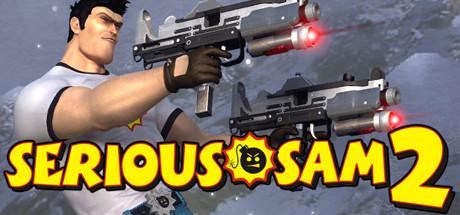

With the exception of Zeiss lenses and some of the higher end Canon lenses, they are almost universally variations of the engineered plastic around a metal mount and frame theme…as is the case here. Build and HandlingĪ lot of lenses pass through my hands every year, and with a few notable exceptions, the difference in build quality for modern lenses varies very little.
SERIOUS SAM 2 MF MANUAL
As we will see in this review, Samyang has most definitely made its point with the optics of this lens, but its decision to continue to only make manual focus lenses (with only focus confirm in Nikon F mounts) will still probably prove its undoing with most photographers.

Samyang’s price point makes it very competitive, but it’s optics are going to have to prove to be exceptional to make photographers take a second look at it…particularly when it is a manual focus lens. Nikon’s own AF 135mm f/2D lens is not quite as good as Canon’s and also runs an extra $250 ($1299) at current pricing. The Samyang has to provide some compelling reasons to choose it over the excellent Canon. It is a favorite of many photographers (including myself).
SERIOUS SAM 2 MF SERIES
The 135L, however, is a very deserving member of Canon’s “L” series lenses, with an excellent build, very fast and accurate USM autofocus, and wonderful optics. This is a higher price than most people have paid for the lens, however, for between discounts and the used market, it would not be difficult to pick up a copy anywhere between $800-900. This is a good price for a 135mm lens, as the retail price for the Canon EF 135mm f/2L (a pretty legendary lens) is $1049. It retails for $549, which gives it a little more wiggle room than the 50mm. The problem, of course, is that all of these lenses save the Zeiss offer autofocus motors for that price. Sure, there are more expensive options like the Sigma ART and even the Zeiss Planar T* 50mm f/1.4. Its introductory retail price is $399 at B&H, which, coincidentally, is the same price that Canon’s own EF 50mm f/1.4 and the original Sigma 50mm f/1.4 (not ART series) and $3 more than the Nikon AF-S 50mm f/1.4G lens.

Take, for example, the 50mm f/1.4 that we are currently reviewing. The Zeiss option at any given focal length is pretty much guaranteed to be the most expensive, while the Samyang option at any given focal length is typically the cheapest.Īnd this is why the two newest Samyang lenses are the biggest gambles the company has made thus far. Samyang/Rokinon has occupied the opposite end of the spectrum from high end manual focus lens producer Zeiss. Samyang has carved itself out a niche by offering lenses with no frills but highly competitive optics that have drawn in photographers on a budget and videographers that don’t have a Zeiss kind of budget. Previously they have primarily offered budget alternatives to a variety of large aperture primes that typically cost a lot of money. Samyang/Rokinon has entered uncharted waters with the release of the new 50mm and 135mm lenses ( read my review of the 50mm f/1.4 here).


 0 kommentar(er)
0 kommentar(er)
